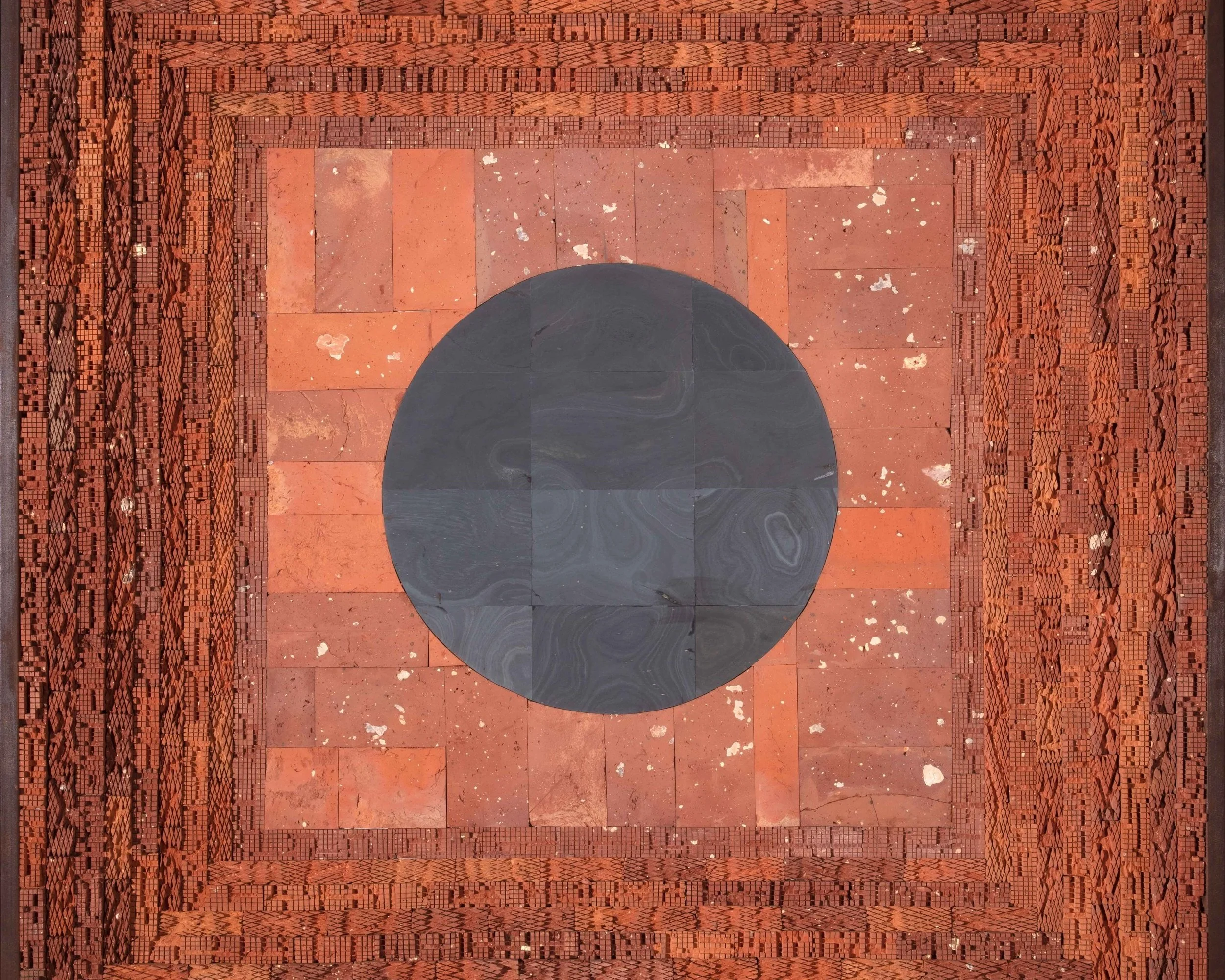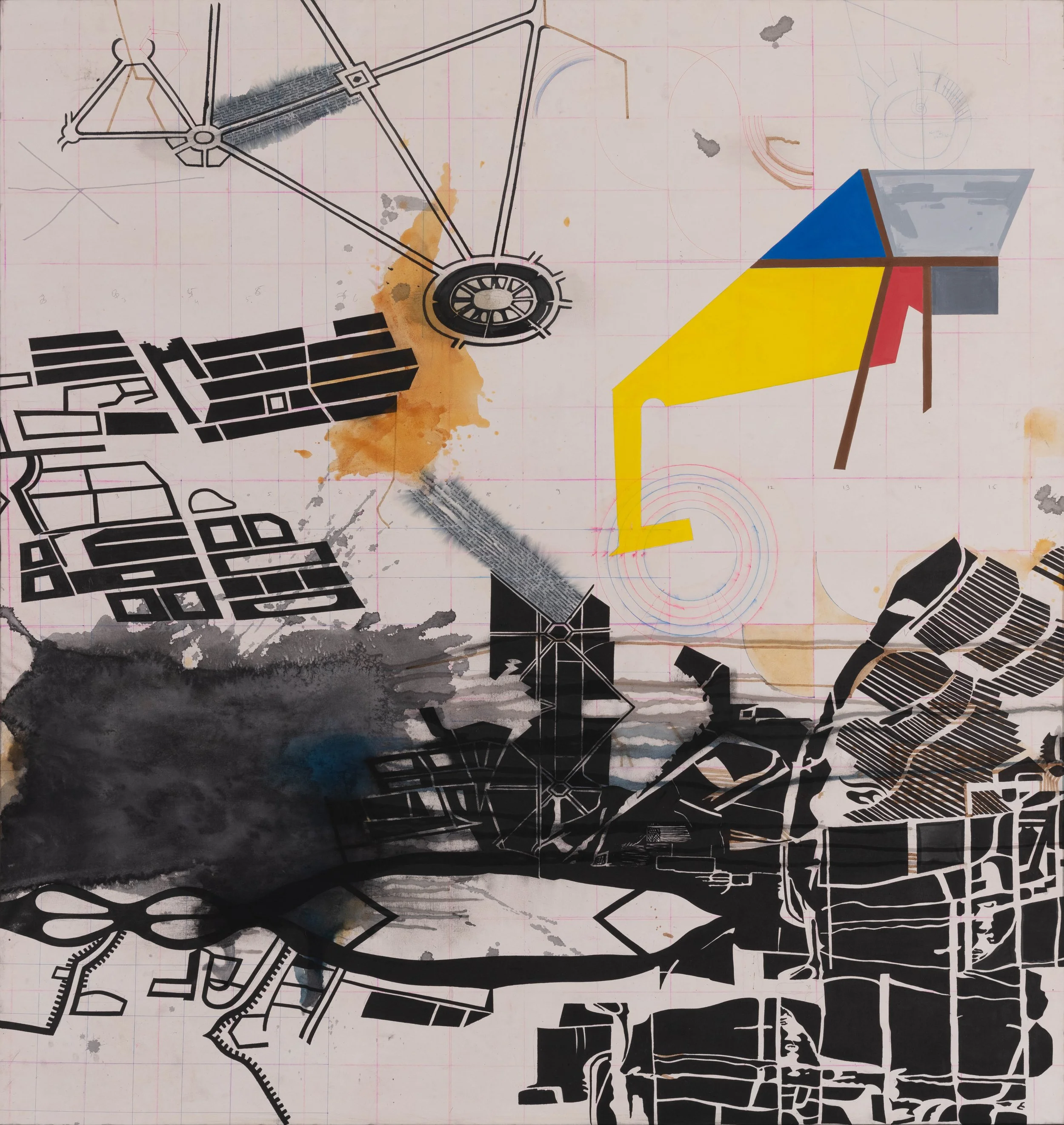The Cityscape in M. Pravat’s ‘Concrete Dusk’
Elevation 1. Photo courtesy: Vida Heydari Contemporary
M. Pravat’s solo exhibit, ‘Concrete Dusk’ showcased a breath-taking collection of burnt brick sculptures and paintings in abstraction, exploring the essence of the cityscape.
The works of artist M. Pravat are known to be quite informed of the planning and development projects around cityscapes, which he revisualizes in his creations by engaging with the ways in which we demonstrate the city space on a blue-print. Interestingly, Pravat, too offers his plans and visions for his viewers for the cityscapes, almost as if it was a city plan in progress.
Pravat’s solo exhibit, ‘Concrete Dusk’—organised by the Pune based art gallery, Vida Heydari Contemporary in August at New Delhi’s Bikaner House—showcased a breath-taking collection of burnt brick sculptures and paintings in abstraction. On asking if he had any particular message in his show, Pravat shared that the city is a busy space hustling and bustling with sights and symbols. His own journey—from his suburban hometown in West Bengal’s Midnapore—gave him an enormous impetus to look at the city in all possible manners. There were elements of the city that stood out for him, but they remained buried in the hyperbodied imageries he witnessed at that moment.
This experience became relevant to Pravat’s artworks because he began to question the cityscape through the available visuals. Thereby, he chose not to give his works any specific or direct description or semantic engagement; to him, art lacks functionality and it’s as vast in its purpose of uncertainty. Furthermore, Pravat stressed how he prided himself in not adhering to a form, but to a feeling.
Unplanned Expansion 3. Photo courtesy: Vida Heydari Contemporary
Pravat realised early in life that art was his very best means to find himself. His love and engagement with music, theatre, and the other practices of the arts helped him gain a particular articulation that, initially, as a student of commerce was a little difficult for him to expound on. His father—a pharmacist by profession—was very against his artistic pursuits but he managed to find a path for his interests. Pravat says that his engagement with art during his childhood gave him pleasure and in this pursuit of pleasure and creation, he found himself an evolved ‘sensitivity’. On nourishing this sensitivity at The Maharaja Sayajirao University of Baroda, India, through a Master's degree in Fine Arts, Pravat found comfort in ‘dealing with architecture, urban planning, and the city’.
For nearly two decades, Pravat explored social expressions in his practice. He says that he doesn’t want to unfurl the meanings behind his creations. Instead, he allows his works to permeate his viewers in the hope of a fluid art culture, where the subjective presence of the onlooker is important. He doesn’t believe in deciphering his art in his own words as he feels that his art is not going to change anything. Also, his body in transit acquires information which he may have included subconsciously which makes it difficult to qualify his own work. Therefore, his body—through which he delivers his art—is constantly acquiring information that he likes to toy with while he is in a space of meditation. This meditation, in turn, seeps in tepid details of design and finesse that becomes evident in his artworks.
Pravat moved to Delhi in 2004 after he met his wife in Baroda. In 2011, he performed his solo exhibit with Nature Morte and it took him eleven years to find the city embolden in his work again.
Pravat’s heightened visualisations are often geometric in essence and, yet, they’re able to hold the suspense rendered by the artist in his paintings. One such poignant instance in his triptych, titled Unplanned Expansion. These canvases carry his almost undecipherable writings. He leaves the message faded but visible, which he says were left for the viewers to decipher for themselves.
These little ambiguities add to the gorgeous crepuscular quality of Pravat’s palette. It makes his viewers also engage with the sudden bright sunny colours that seem to merge with the brick reds, blacks, whites, and similar earthy tones that mark the twilights in Indian cities. Here’s an artist who engages, directly, with the city’s dimming lights in his creations.
A similar colour palette is also seen in his two pillar-like constructs named Column 1 and Column 2. Column 2 works with tiny engraved patterns that impresses a gradient quality visual effect on its onlookers and, interestingly, it breaks into pastel pinks and blues at certain parts, almost forming a linear visual impact while lining this cylindrical geometric engagement. His sculptures are valiant in their purpose of aesthetic effects. They remind his viewers to look at the oddity that cities often tend to offer in colour and in essence. Perhaps it’s the same oddity that cities offer to their ‘outsiders’?
Untitled 2. Photo courtesy: Vida Heydari Contemporary
The word ‘concrete’ in the title of the exhibition emerges as an extrapolation of what is solid, rooted, and steadfast in the conviction of a city’s map. It makes us look at the parallels that are, otherwise, not present at the show and, yet, very present in its invisible demonstration. That is to say that Pravat explores the absentia as a dominant feeling in the cityscape. The blurring effects that we see in his works do hint at the lack of explanation that does tend to create a sense mystery.
Another instance can be witnessed in his sculptures named Elevation 1 and Elevation 2, where a large black dot placed in the centre surrounded by burnt brick textures. The black dots in the pieces vary. Lines emerge as he uses different shades of materials, such as cut slades, stone dust, metal, and fired brick, to break the linearity on the surface. Textures surrounding these dots are arranged in such beautiful symmetry that it definitely recreates the impression of the cityscape viewed from atop.
[Pravat’s] sculptures are valiant in their purpose of aesthetic effects. They remind his viewers to look at the oddity that cities often tend to offer in colour and in essence. Perhaps it’s the same oddity that cities offer to their ‘outsiders’?
The exhibit definitely manages to live up to the words at the entrance by the artist, where he states his engagement with tonality, texture, material, shadows, and scales. The curation is fairly minimalistic. Past the entrance, we enter a cubicle zone that has the two pillars placed alongside each other; one was laid on the floor and the other was placed on its stump. A wall breaks the space in two halves displaying artworks in the most meticulously spaced-out fashion.
Right next to the wall, a row of diptychs are placed, made of cut slate, wood, and brick. Each diptych presented detailed and intricate patterns distinct from one another. Similarly, his Precarious Balance occupied a very prominent placement at the entrance as the two ball-like sculptures were placed on the other side of the dividing wall.
When I asked Pravat if he referred to his works as a case in point for abstraction, he responded that his art, instead, is best described as ‘deconstructs’.
This exhibition is truly a promising encapsulation of the present moment in the arts, as Pravat captures the essence of the dawning or the fading of the cityscape. Pravat broadly recreates a city planner’s map as his means to find his world; his imagination, however, remains far more surreal.
***
Satarupa Bhattacharya is an independent cultural practitioner, associated with academic journals on visual and cultural studies. She is currently working on academic publications and a novella. You can find her on Instagram: @sattybatty.



